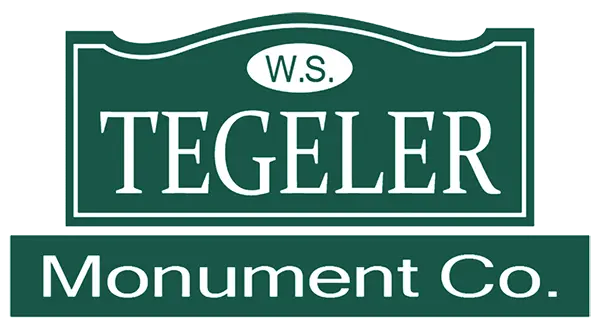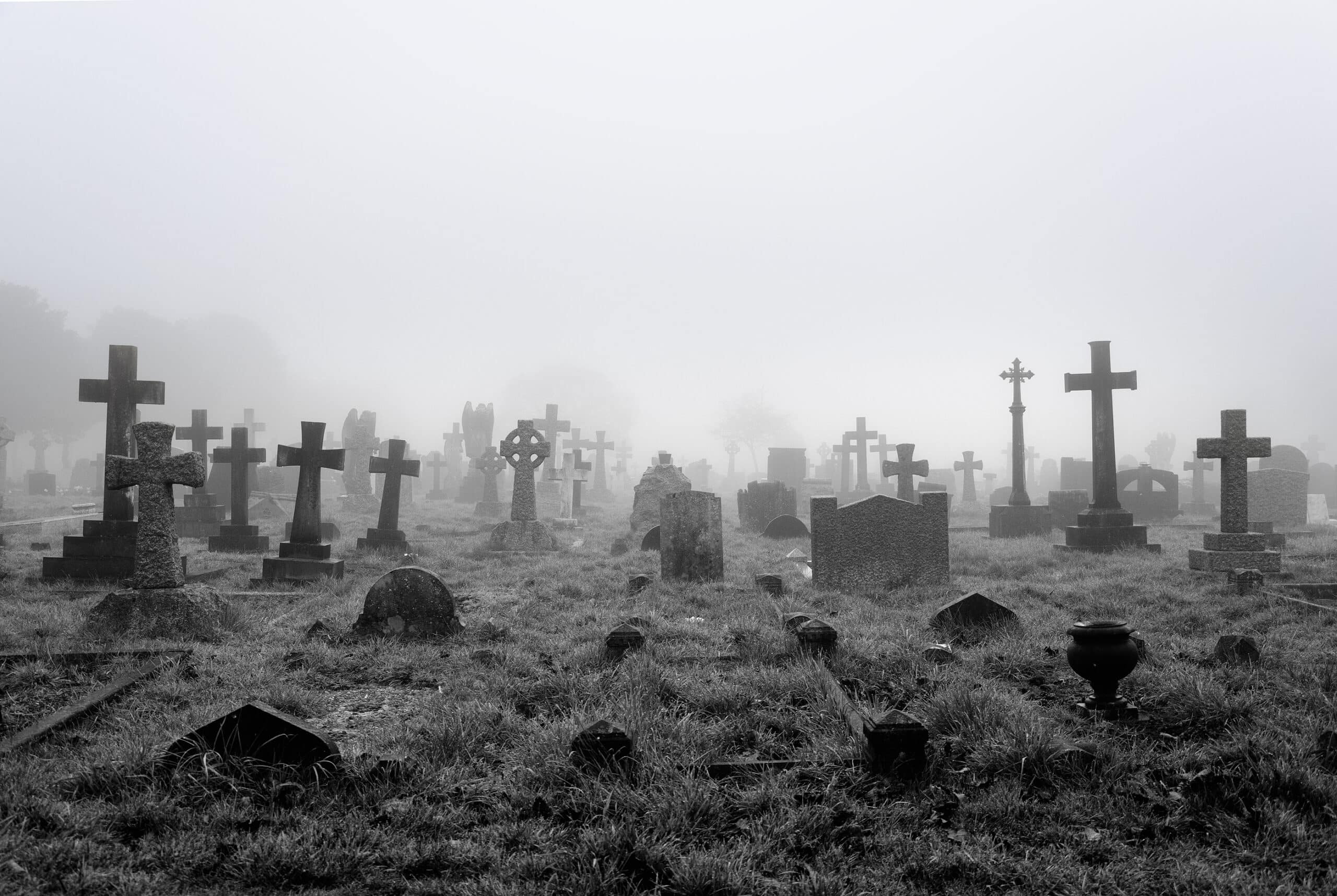Headstones are more than markers of where a loved one rests. They are lasting symbols of remembrance, art, and family heritage. Over time, headstone designs have transformed dramatically, shaped by changes in culture, materials, and technology.
At Tegeler Monument Company, we’ve served families across Maryland, Washington, D.C., Virginia, and Pennsylvania for generations. In that time, we’ve witnessed remarkable changes in how families commemorate their loved ones. This post explores the evolution of headstone design through the decades.
1800s: Ornate Victorian Monuments
In the 19th century, Victorian-era headstones were often elaborate, towering monuments designed to showcase reverence and grief through visual grandeur. Families with means commissioned tall markers crafted from marble or sandstone, which allowed for intricate hand-carved details. These memorials often incorporated symbolic elements that reflected religious devotion, moral virtues, or the family’s social standing.
Angel statues, cherubs, draped urns, and weeping willows were common. Each was chosen for its symbolic meaning. Even the shapes of monuments varied widely, from obelisks to Gothic spires, lending a dramatic and architectural presence to cemeteries of the era.
Scripted epitaphs were another hallmark of the Victorian style. Rather than short inscriptions, families often chose poetic verses or full biblical passages carved in flowing, ornate fonts. Many included phrases like “Asleep in Jesus” or “Gone but Not Forgotten,” which spoke to themes of eternal rest and reunion in heaven. These monuments were intended to convey both grief and grandeur, reflecting the Victorian belief that memorials should be both personal and impressive, a lasting testament to a loved one’s life, virtues, and the family’s legacy.
Early 1900s: Classical and Modest Designs
By the early 20th century, headstone design began to shift toward simplicity and restraint. Granite gradually replaced softer marble, offering far greater durability and resistance to weathering, which allowed monuments to retain their lettering and detail for decades. Instead of towering sculptures, families favored upright rectangular tablets with smoother lines and more uniform shapes.
Modest embellishments, such as subtle floral carvings or small crosses, often replaced the ornate angels and weeping willows of the previous era.
Epitaphs also became shorter and more concise, with many families opting for inscriptions like “Beloved Mother,” “Father,” or “At Rest.” These markers reflected changing social attitudes: while still deeply respectful, they placed less emphasis on public display and more on quiet remembrance.
Many cemeteries during this period began to adopt standardized guidelines for monument size and layout, creating a more orderly appearance while focusing on the enduring qualities of granite over decorative flair. This era set the stage for the even more streamlined designs that would emerge in the mid-20th century.
Mid-1900s: Streamlined and Mass-Produced Monuments
The mid-20th century brought rapid industrialization to nearly every industry, including monument production. Advances in machinery meant headstones could be manufactured faster and at lower costs, making them more accessible to the growing middle class. As urban cemeteries filled and maintenance demands increased, many cemeteries began setting regulations for size, shape, and placement of headstones. This shift encouraged more standardized, streamlined monuments that prioritized function over ornamentation. The focus was no longer on tall, sculptural memorials but on stones that could withstand the elements, require minimal upkeep, and create visual order.
Typical styles during this period included:
- Low-profile lawn-level or bevel markers
- Polished granite finishes
- Minimalist lettering in block fonts
- Companion stones for married couples
This era reflected a cultural move toward practicality and efficiency. Families increasingly selected clean, modern designs that aligned with mid-century values of order and durability. While these headstones often lacked the personalized flourishes of earlier decades, they offered longevity and cost-effectiveness, qualities that appealed to families seeking a dignified yet straightforward way to honor loved ones.
Late 1900s: Personalization and Color
By the latter half of the 20th century, many families began to push back against the uniformity that had dominated mid-century cemeteries. Cultural shifts toward individual expression and storytelling inspired more personalized monuments. At the same time, advancements in sandblasting and laser etching opened the door to far greater detail than ever before. Importing colored granite from around the world also became more common, allowing families to choose distinctive hues and finishes that stood out in the cemetery landscape. This marked a return to seeing headstones as works of art as well as markers of remembrance.
Key design elements included:
- Etched portraits of the deceased
- Colored granite (black, red, blue-gray)
- Custom-shaped headstones (hearts, crosses, books)
- Longer epitaphs reflecting personality and accomplishments
This period marked the beginning of the modern trend toward celebrating individuality over conformity. Monuments once again became highly personal, often incorporating biographical details, favorite sayings, or visual motifs connected to a person’s hobbies, careers, or passions.
2000s to Today: Fully Customized Memorials
In the 21st century, families now enjoy unprecedented creative freedom in headstone design. Modern laser and diamond etching allow for near-photographic detail, while CAD software enables precise custom shapes.
Contemporary design trends include:
- Full-scene etchings (landscapes, hobbies, religious imagery)
- QR codes linking to online memorials
- Mixed materials such as bronze plaques on granite bases
- Integrated flower vases, benches, or statuary
- Multilingual inscriptions reflecting family heritage
- Eco-conscious “green” markers made from sustainable materials
These designs reflect today’s values of storytelling, personalization, and cultural inclusivity: headstones that don’t just mark a life, but tell its story.
What This Evolution Tells Us
The changes in headstone design over the decades reveal more than aesthetic preference. They show how our culture’s relationship with death, memory, and legacy has shifted. In earlier centuries, memorials were intended to project formality, wealth, and permanence, standing as public monuments to an entire family’s legacy. Today, families often prioritize warmth, storytelling, and emotional resonance over grandeur. This shift illustrates a broader cultural move toward personal connection rather than public display, showing that remembrance has become more about celebrating the individual than impressing future generations.
- From formality to familiarity — shifting from grandeur to personal warmth
- From uniformity to individuality — honoring each life’s unique story
- From stone alone to multimedia — integrating digital memorials alongside traditional craftsmanship
Each era leaves behind lessons for the next, demonstrating how love, grief, and remembrance continue to evolve. Where once headstones were static symbols of loss, they are now seen as living reflections of a person’s identity and the relationships they nurtured. This progression underscores that memorials are not just about marking the end of a life; they are about preserving the meaning and spirit of that life for those who come after.
Choosing a Design for Today and Tomorrow
Selecting a headstone is a deeply personal process. Families today often consider:
- Longevity and durability of materials
- Flexibility to add future names or inscriptions
- Style harmony with surrounding cemetery monuments
- Symbolism and cultural meaning
- How the design reflects the person’s life and personality
At Tegeler Monument Company, we help families blend timeless craftsmanship with modern personalization, ensuring your monument honors your loved one’s story while standing strong for generations.
Contact Tegeler Monument Company
If you’re planning a monument or headstone and want guidance on design options, Tegeler Monument Company is here to help. Our experienced team will walk you through every step, from selecting materials to final installation. Contact us today.


Comments are closed